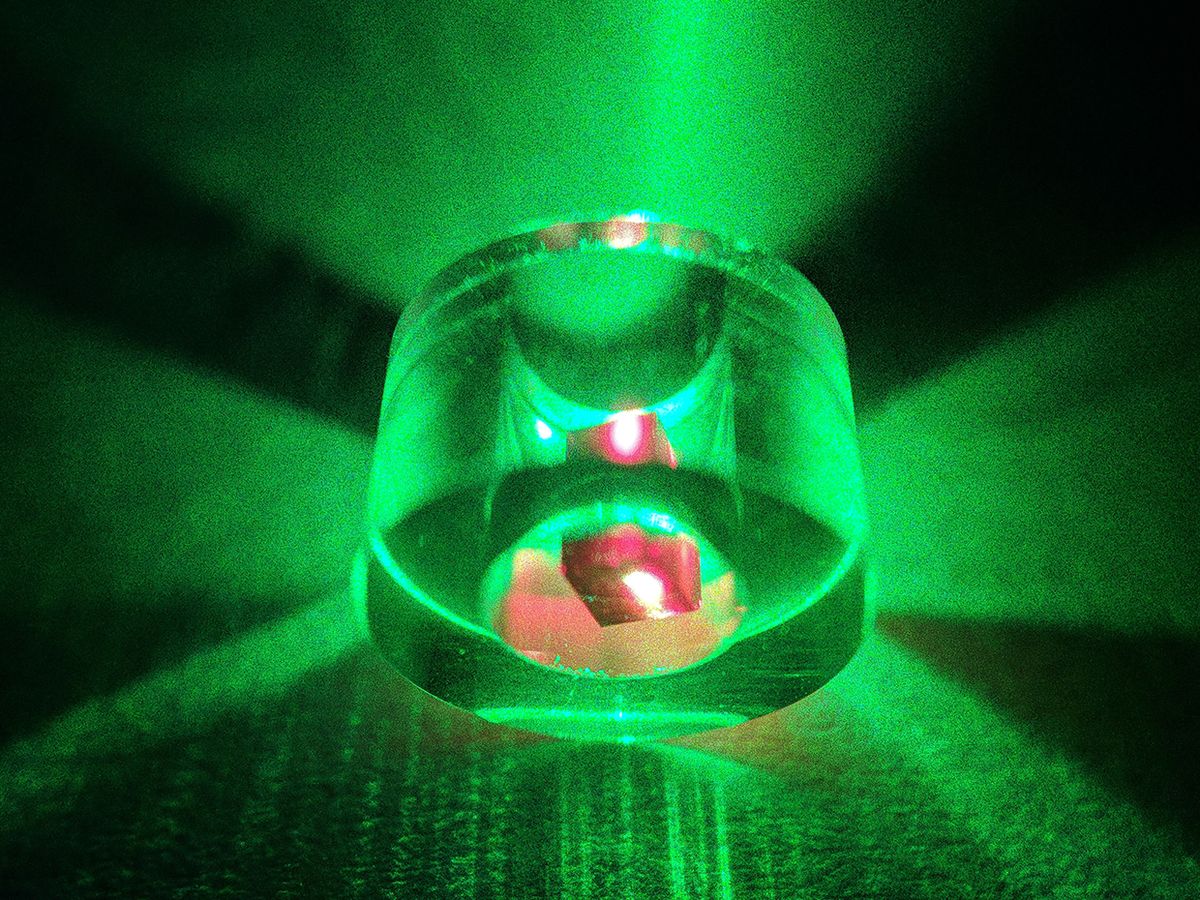Since its invention in 1960 by Charles Townes, the laser has become as ubiquitous in today’s technology as the transistor or the microprocessor. Townes was also the inventor, in the early ‘50s, of the maser, the progenitor of the laser. Instead of light, it amplified radio waves, and its operating principle, stimulated emission, became the working principle of both the maser and laser.
The maser had an interesting property: it could amplify radio signals without adding noise caused by the motion of electrons. Radio astronomers turned to masers to amplify weak radio signals from distant galaxies and quasars, and NASA used them in its Deep Space Network to communicate with the Voyager space probe.
However, unlike the laser, the maser’s applications remained limited, mainly to atomic clocks and for metrology. One reason was that masers require refrigeration with liquid helium to temperatures close to absolute zero, which increased the bulk of these devices substantially. Another reason was that during the 1960s, cryogenically cooled low-noise FET microwave amplifiers and oscillators that were simple and flexible in their design and capable of achieving very low noise temperatures, also became available.
Now, a team of researchers from the Imperial College London, the University College London, the Queen Mary University London, and the University of Saarland in Saarbrücken, Germany have reported in Nature a maser that does not require cooling and might bring back the maser as a low-noise amplifier. Instead of rubidium and other gases, or ruby sapphire crystals, they used diamond to amplify the microwaves.
The amplification in lasers and masers is caused by a phenomenon called stimulated emission. The atoms in the lasing material are brought into a higher energy state, or inverted state, by absorbing photons coming from an external light source, a process called “optical pumping."
When an atom with an electron in an inverted state is hit by an incoming photon, the electron will jump back to the ground state, emitting a photon of the same energy as the incoming photon, while the incoming electron that stimulated the event continues on its route.
These two photons, when colliding with other atoms, will double in number. In each subsequent step, the photons will double their number, and so on, resulting in an exponential increase of the intensity of the light passing through the laser.
The maser also makes use of an optical pump that causes the population inversion. But the electrons in the inverted population occupy higher spin states and don’t fall immediately back toward the ground state, but fall in stages.
"When they cascade down, they go through several stages very quickly, but at one stage they get stuck, and then they have quite a long lifetime in this inverted state," says Christopher Kay, a researcher at the University of Saarland. The difference between the two levels corresponds to the wavelength of the emitted microwave radiation of the maser.
To make their maser, the researchers placed a millimeter-sized diamond between the poles of a powerful electromagnet. By varying the strength of the magnet, the researchers could tune the frequency. "We have chosen to work with 9 Gigahertz (GHz), but we can choose anything above 2 GHz to make this work," he says.
The choice of diamond as the lasing material was the result of doctorate work by Jonathan Breeze at Imperial College London. He found that it was the coupling of the electron spins with the nuclear spins of the atoms in the lattice of the material that prevented the electron spin inversion from lasting long enough to allow amplification of photons.
It was also known that in organic materials, electron spin states survive longer because they interact less with the organic carbon lattice. In a previous experiment, the researchers chose an organic material, pentacene, as the lasing material. However, its melting point proved too low to resist the heating caused by the pump laser, and the maser could only function in a pulsed mode.
Breeze then went to look for a suitable material by looking through a list of materials, eliminating those with high nuclear spins. “I did some research and found that diamond had an electron spin-lattice relaxation rate that was a billion times slower than in ruby, and I realized that if you carefully design your laser, you would not need cooling at all,” remembers Breeze.
While the carbon lattice of diamond is electron-spin friendly, they still had to introduce somehow “unpaired” electrons in the diamond that can form the inverted population and that can be switched from a lower quantum state, 0, to a higher state, 1, by absorbing photons from the pumping laser.
For this, the researchers turned to an approach similar to the experiments for creating qubits in diamond. They introduced nitrogen atoms by growing the diamond in a nitrogen-rich atmosphere, and then by bombarding the sample with electrons. The electrons knock out carbon atoms, creating vacancies in the lattice.
In a last step, the diamond is annealed at a high temperature, so the vacancies move around and lodge themselves next to a nitrogen atom, forming a defect called a nitrogen-vacancy center. This defect contains two unpaired electrons that can switch from one spin state to another by absorbing a photon.
Unlike pentacene, diamond withstands high temperatures and is a good conductor of heat, which allows the continuous operation of the maser.
Kay expects that if you would cool the maser, you would obtain a noise level that might compete with the state of the art cryogenic FET amplifiers, now used for communication with spacecraft.
But it is still early days, according to Rick Fisher, an astronomer at the National Radio Astronomy Observatory in Charlottesville, Virginia: “I'm hesitant to discount a comeback of maser technology to radio astronomy, but this technology would require a lot of development to begin to attract the attention of radio astronomy engineers.”



